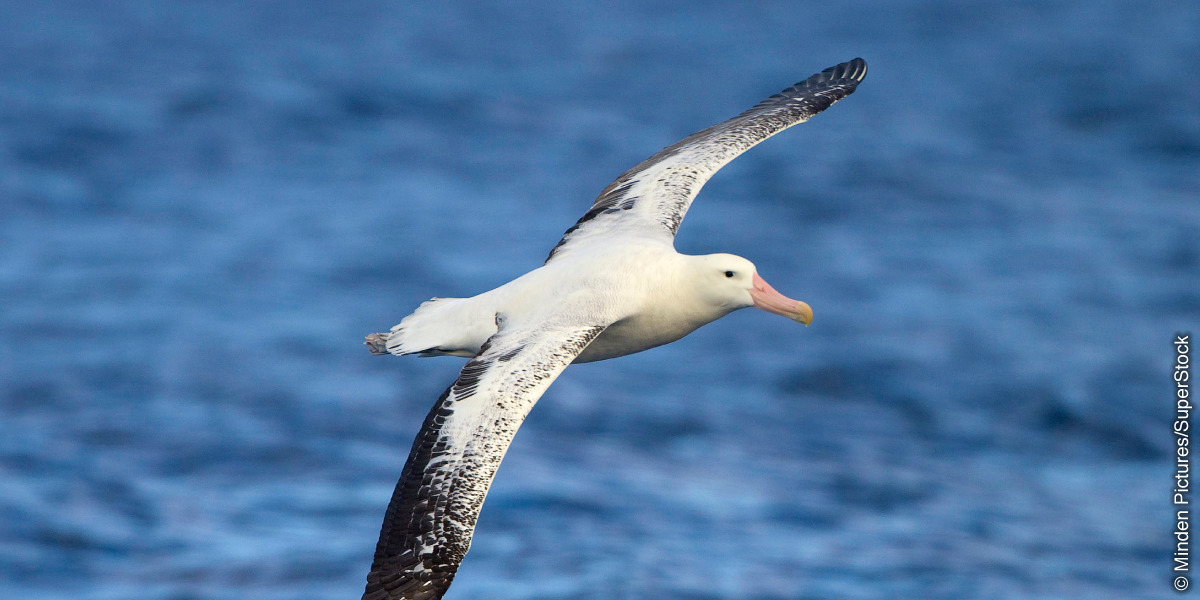
Birds that soar can stay airborne with minimum effort. The wandering albatross is an outstanding example. With a wingspan of 11 feet (3.4 m) and weighing nearly 20 pounds (8.5 kg), this bird can fly thousands of miles using very little energy! Its secret lies in both its anatomy and its soaring technique.
During flight, an albatross engages special tendons that lock its wings in place when fully extended, thus allowing the muscles to rest. The bird’s other secret—how it soars hour after hour—involves its mastery of oceanic winds.
At sea, albatrosses climb, turn, and descend in continually repeated arcs—a maneuver that gives the birds enough momentum to compensate for that lost through drag. Only recently did scientists figure out how the birds are able to do this. Using high-resolution tracking devices and special computer software, they found that albatrosses gain the needed energy when they wheel from windward (into the wind) to leeward in the upper part of the flight curve. “The extraction of energy” is “smooth and continuous,” state the scientists. The result? The bird can soar for hours on end without a single flap of its wings!
These insights may help engineers design aerial vehicles that are more fuel efficient, perhaps even using engineless propulsion.